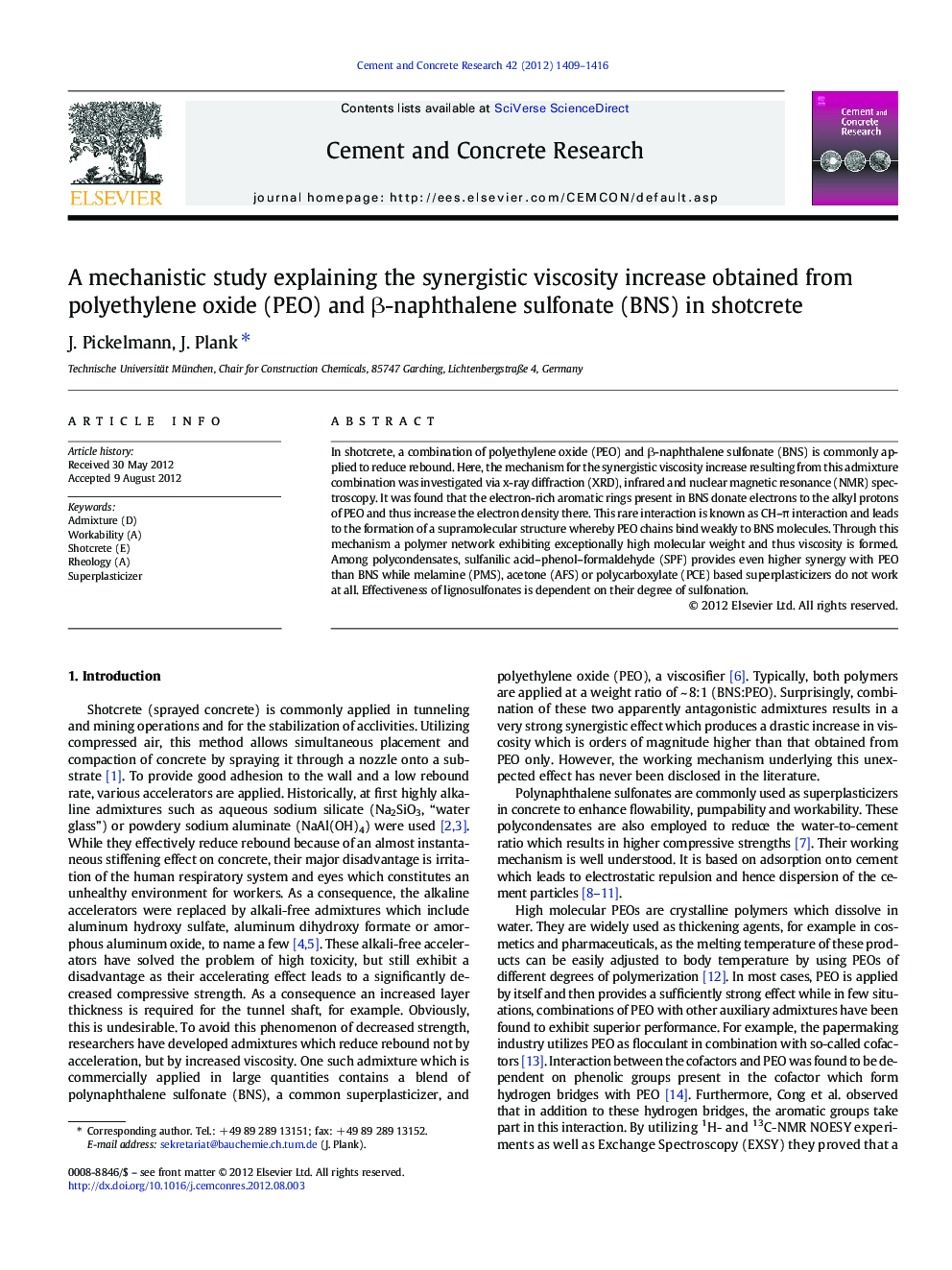| کد مقاله | کد نشریه | سال انتشار | مقاله انگلیسی | نسخه تمام متن |
|---|---|---|---|---|
| 1456499 | 989206 | 2012 | 8 صفحه PDF | دانلود رایگان |

In shotcrete, a combination of polyethylene oxide (PEO) and β-naphthalene sulfonate (BNS) is commonly applied to reduce rebound. Here, the mechanism for the synergistic viscosity increase resulting from this admixture combination was investigated via x-ray diffraction (XRD), infrared and nuclear magnetic resonance (NMR) spectroscopy. It was found that the electron-rich aromatic rings present in BNS donate electrons to the alkyl protons of PEO and thus increase the electron density there. This rare interaction is known as CH–π interaction and leads to the formation of a supramolecular structure whereby PEO chains bind weakly to BNS molecules. Through this mechanism a polymer network exhibiting exceptionally high molecular weight and thus viscosity is formed. Among polycondensates, sulfanilic acid–phenol–formaldehyde (SPF) provides even higher synergy with PEO than BNS while melamine (PMS), acetone (AFS) or polycarboxylate (PCE) based superplasticizers do not work at all. Effectiveness of lignosulfonates is dependent on their degree of sulfonation.
Journal: Cement and Concrete Research - Volume 42, Issue 11, November 2012, Pages 1409–1416